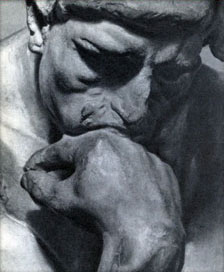Deontic logic the logic of obligation and permission. There are three principal types of formal deontic systems. (1) Standard deontic logic, or SDL, results from adding a pair of monadic deontic operators O and P, read as ‘it ought to be that’ and ‘it is permissible that,’ respectively, to the classical propositional calculus. SDL contains the following axioms: tautologies of propositional logic, OA S – P – A, OA / – O – A, O(A / B) / (OA / OB), and OT, where T stands for any tautology. Rules of inference are modus ponens and substitution. (See the survey of SDL by Dagfinn Follesdal and Risto Hilpinin in R. Hilpinin, ed., Deontic Logic, 1971.) (2) Dyadic deontic logic is obtained by adding a pair of dyadic deontic operators O( / ) and P( / ), to be read as ‘it ought to be tha. . . , given tha. . .’ and ‘it is permissible tha. . . , given that . . . ,’ respectively. The SDL monadic operator O is defined as OA S O(A/T); i.e., a statement of absolute obligation OA becomes an obligation conditional on tautologous conditions. A statement of conditional obligation O(A/B) is true provided that some value realized at some B-world where A holds is better than any value realized at any B-world where A does not hold. This axiological construal of obligation is typically accompanied by these axioms and rules of inference: tautologies of propositional logic, modus ponens, and substitution, P(A/C) S – O(-A/C), O(A & B/C) S [O(A/C) & O(B/C)], O(A/C) / P(A/C), O(T/C) / O(C/C), O(T/C) / O(T/B 7 C), [O(A/B) & O(A/C)] / O(A/B 7 C), [P(B/B 7 C) & O(A/B 7 C)] / O(A/B), and [P(See also DEONTIC PARADOXES, FORMAL LOGIC , MODAL LOGI. J.E.T.
